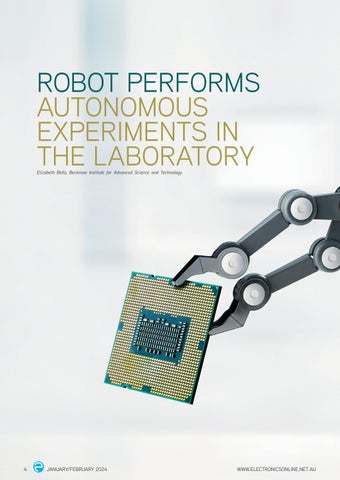ROBOT PERFORMS AUTONOMOUS EXPERIMENTS IN THE LABORATORY Elizabeth Bello, Beckman Institute for Advanced Science and Technology
4
JANUARY/FEBRUARY 2024
WWW.ELECTRONICSONLINE.NET.AU

ROBOT PERFORMS AUTONOMOUS EXPERIMENTS IN THE LABORATORY Elizabeth Bello, Beckman Institute for Advanced Science and Technology
4
JANUARY/FEBRUARY 2024
WWW.ELECTRONICSONLINE.NET.AU